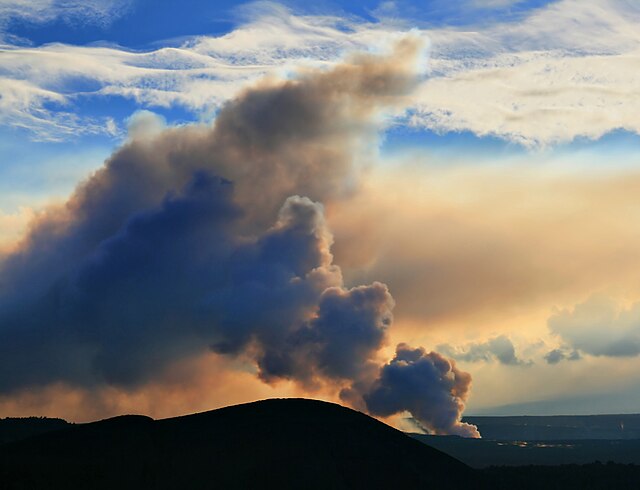A fumarole is a vent in the surface of the Earth or another rocky planet from which hot volcanic gases and vapors are emitted, without any accompanying liquids or solids. Fumaroles are characteristic of the late stages of volcanic activity, but fumarole activity can also precede a volcanic eruption and has been used for eruption prediction. Most fumaroles die down within a few days or weeks of the end of an eruption, but a few are persistent, lasting for decades or longer. An area containing fumaroles is known as a fumarole field.
Fumarole at Sol de Mañana, Bolivia
Sampling gases at a fumarole on Mount Baker in Washington, United States
Traditional sulfur mining at Kawah Ijen.
Volcanic gases are gases given off by active volcanoes. These include gases trapped in cavities (vesicles) in volcanic rocks, dissolved or dissociated gases in magma and lava, or gases emanating from lava, from volcanic craters or vents. Volcanic gases can also be emitted through groundwater heated by volcanic action.
Volcanic gases entering the atmosphere with tephra during eruption of Augustine Volcano, Alaska, 2006
Degassing at the summit crater of Villarrica, Chile
Vog in Hawaii, Kilauea 2008 eruptions
Lava fountains at Holuhraun







